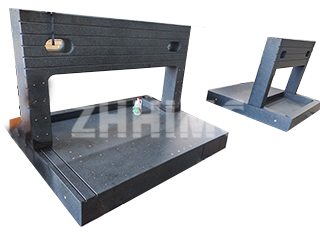In the interconnected world of precision manufacturing, where components often cross international borders before final assembly, the integrity of measurement standards is paramount. The foundation of this trust rests upon the granite surface plate, an instrument whose performance must be universally consistent, regardless of its origin. Professionals involved in quality assurance must navigate not only the technical specifications but also the global supply chain, questioning whether a plate sourced from granite surface plate India or any other international market adheres to the strict protocols expected in major metrology labs.
The Unseen Standard: Why Granite Surface Plate is Standard in Metrology
The phrase granite surface plate is standard is more than a casual observation; it reflects a deep-seated reliance on the material’s unique physical properties. Granite’s low coefficient of thermal expansion (CTE), superior vibration damping, and lack of corrosion make it the benchmark reference plane. Its non-metallic nature eliminates the magnetic influence that could skew readings taken with magnetic-based measurement tools. This universal acceptance is what allows manufacturers to ensure parts measured in one facility will be compatible with assemblies hundreds or thousands of miles away. The core challenge for quality control is verifying that any plate, regardless of brand—whether a globally recognized name or a new entry in the market—meets the required geometric accuracy. This verification process, the granite surface plate inspection, is a rigorous protocol involving specialized equipment.
Verifying Accuracy: The Science of Granite Surface Plate Inspection
The process of granite surface plate inspection is a critical, mandated procedure that ensures the plate’s flatness tolerance—its grade—is maintained. This inspection goes beyond a simple visual check and involves sophisticated optical and electronic tools. Inspectors use electronic levels or auto-collimators to map the entire surface, taking hundreds of precise measurements across established grids. These measurements are then analyzed to calculate the plate’s overall deviation from flatness. The inspection process assesses several critical parameters, including overall flatness, which is the total variation across the entire surface; repeat reading, which is the localized flatness in smaller, critical working areas and is often a better indicator of wear; and localized area flatness, which ensures no sudden dips or bumps that could skew highly localized readings. A robust inspection protocol demands traceability back to national standards, confirming that the plate’s certificate of calibration is valid and recognized worldwide. This is vital when dealing with materials from diverse sources, such as those from granite surface plate India, where manufacturing quality must be checked against stringent international benchmarks like DIN 876 or the US Federal Specification GGG-P-463c.
Customization for Efficiency: Utilizing Granite Surface Plate Inserts
While the vast majority of measurements require only the fundamental flat reference plane, modern metrology sometimes demands customized functionality. This is where granite surface plate inserts come into play, allowing the integration of specialized tools directly into the reference surface without compromising the overall flatness. These inserts typically consist of threaded metal bushings or T-slots, precisely set flush with the granite surface. They serve several essential purposes, including fixture mounting, which allows jigs and fixtures to be rigidly bolted directly to the plate, creating a stable, repeatable setup for complex or mass-produced component inspection. This stability is crucial for CMM (Coordinate Measuring Machine) work or highly accurate comparison gauging. Inserts can also be used for component retention, anchoring components during inspection to prevent movement that could introduce errors, particularly during scribing or layout operations. Finally, using standardized insert patterns ensures that fixturing developed for one plate can be seamlessly transferred to another, streamlining workflow and minimizing setup time. When installing these inserts, the plate’s integrity must be protected, as the installation requires highly specialized drilling and setting techniques to ensure that the surrounding granite is not fractured and that the insert is perfectly level with the working surface, maintaining the plate’s certified grade.
The Global Supply Chain: Evaluating Granite Surface Plate India
The sourcing of precision equipment has become a global endeavor. Today, markets such as granite surface plate India are significant suppliers, leveraging vast granite reserves and competitive manufacturing processes. However, a critical professional must look beyond the price and verify the core elements of quality. When evaluating an international supplier, the focus must be on material certification, ensuring the black granite (such as diabase) sourced is of the highest quality, low in quartz content, and certified for its density and low CTE. Traceability and certification are paramount: the manufacturer must provide verifiable, traceable calibration certificates from an internationally recognized accredited laboratory (like NABL or A2LA), with the certificate explicitly stating the grade achieved. Furthermore, the final quality hinges on lapping expertise, and purchasers must ensure the supplier has the necessary controlled environments and experienced technicians to consistently achieve Grade 0 or Grade AA flatness tolerances. The decision to purchase from any supplier, domestic or international, hinges on the verifiable adherence to the technical truth that granite surface plate is standard only when its inspection confirms it meets the required grade. Leveraging the advantages of the global market is only beneficial when metrology standards are upheld without compromise.
Post time: Nov-26-2025

